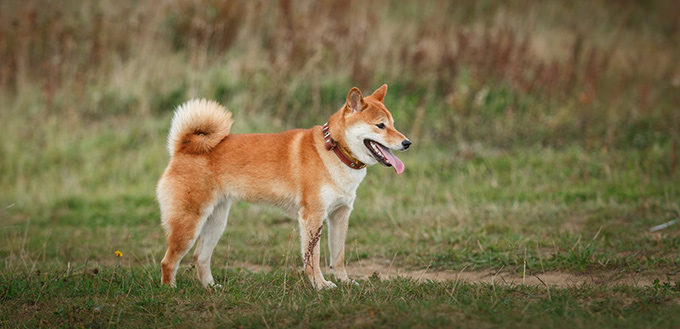Osteoarthritis is one of the most common types of arthritis in dogs. It can severely impact the dog’s ability to move, adversely affecting its quality of life. There is pain and discomfort and may increase the risk of complications related to impaired mobility. Knowing what causes osteoarthritis in dogs and how to know if your dog has one or is at risk of developing this condition will help you determine the best course of action to take.
Canine Osteoarthritis: An Overview
Arthritis is actually a very broad term used to describe a variety of conditions that affect the joints. However, when chronic joint inflammation is brought about by structural changes in the cartilaginous surfaces of the joints, it is called osteoarthritis.
Bones are made of very dense connective tissues, giving them strength and rigidity. However, towards the ends of bones are soft spongy tissues made of cartilage. These have a rather smooth surface so they won’t grind into the surface of the opposing bone. Between them is a thick lubricant that helps cushion impact forces and keeps the surfaces of the opposing bones free from friction.
Unfortunately, due to certain factors, the integrity of the cartilage in these opposing bone surfaces deteriorates. Since the surfaces of these opposing bones no longer have the protective covering of the cartilage there is a possibility of these bones getting in contact with each other. This can create pain and other symptoms that are now considered characteristic of osteoarthritis. Bits of broken off cartilage can also cause inflammation in the joint capsule causing joint immobility.

Osteoarthritis in Dogs: What Causes It?
In humans, osteoarthritis is almost always considered a disease of the elderly. In dogs, however, it is not entirely accurate even though they do have an increased risk of developing canine osteoarthritis. Osteoarthritis in dogs is believed to be associated with a congenital defect to the joints such as elbow and / or hip dysplasia. It can also be because of a dislocation of the shoulder joints or the kneecap. Osteochondritis dissecans can also lead to canine osteoarthritis whereby the cartilage abnormally develops, creating a cartilage right within the joint capsule itself. Trauma and unusual wear on the cartilage and joints can also lead to osteoarthritis in dogs.
While not really a causative factor for canine osteoarthritis, veterinarians point to obesity as one of the major risk factors to its development. The joints technically bear the weight of the dog’s body. Obesity puts pressure on the joints, drawing the opposing surfaces of the bones within the joint capsule a lot closer. That being said, diabetic dogs are also at an increased risk for canine osteoarthritis, especially those that are diagnosed with Type 2 diabetes.
Any other factor that can predispose dogs to obesity can also increase the risk of osteoarthritis in dogs. These can include lack or insufficient amounts of physical activity or exercise and too much calories and fat in the dog’s diet without commensurate increase in physical activity.
Other potential risk factors for osteoarthritis in dogs include chronic administration of steroids and hyperlaxity of the joints. Chronic steroid use can be seen in dogs with chronic inflammatory problems while excessive joint looseness may be congenital if not hereditary.
How Do You Know Your Dog has Osteoarthritis?
Impaired mobility is one of the greatest indicators of a possible joint abnormality. Since joints join two opposing bones and that muscles are actually the ones moving these bones at the joint, a problem in the articular surface will make for some really difficult movements at the joints. Even if the muscles will be able to contract and move one bone relative to the opposing bone, if the degree of movement at the joints is limited then movement may not be that fluid at all.
You may see your dog lying down more frequently. It may have issues getting up and out of its dog bed. It may not want to exercise or even to walk because doing so can already cause great discomfort. If you look at its legs you may actually notice stiffness. In most dogs, there is also lameness as well as a bunny-hopping gait whereby the hind legs are pushed from the ground in an effort to limit the movement at the joints. Sometimes, you may actually hear popping or even clicking sounds emanating from the dog’s joints especially when it attempts to move.
Over time, your dog will not want to move. There is an overall reduction in its physical activities. If your dog is able to complete a full 30 minutes of walking without any problems before, maybe now it will be good if it can complete 10 to 15 minutes without having to rest. Of course, there are other conditions that can create such observations.
If you try to touch or hold the affected joint your dog may let out a faint cry or may even snap at you since it’s painful. The joints will usually be swollen. It may also lick its affected joint in the hope of alleviating the pain.
Diagnosing Osteoarthritis
Sadly, all of the signs that we mentioned above are merely presumptive. If you really need to be certain a veterinarian can help you. Your vet will need your observations about your dog’s signs and symptoms such as joint pain and swelling and changes in mobility and levels of activity. He may also want to know if your dog has had any accidents in the past such as getting hit by a vehicle, jumping from a certain height, and things that may predispose your pet to trauma or injury to the joints.
Your vet can then perform a thorough physical examination focusing mostly on the affected joints. The thickness of the joint capsule will be evaluated while assessing your pet’s pain response to joint manipulation or palpation. The joints will also be palpated for increased synovial fluid within the capsule itself. The muscles will also be assessed if atrophy is already beginning to develop.
Most vets will subject dogs suspected of having osteoarthritis to x-rays. However, this will only show changes in the bone’s structure, not the spongy cartilage. As such, it should be taken together with the results of the physical examination and the comprehensive health history of the dog.
Others may call for magnetic resonance imaging as a much better way to visualize the current state of the cartilaginous structures in the joint capsule like menisci and ligaments. Computed tomography scanning is preferred when the affected joints are those in the elbows, wrists, or ankles.

How is Canine Osteoarthritis Managed?
There is no single treatment approach to canine osteoarthritis. The goal of treatment is basically in the management of pain and help to ensure increased mobility for the dog. Medications and supplements abound which all can help to slow down the deterioration of the joint capsule. Sadly, there really is no way to turn back the hands of time and reverse the deterioration of the cartilage.
Reconstructive surgery may be needed if the joint capsule has been severely damaged. If there are tissue fragments within the capsule, these can be surgically removed as well. Sometimes, the entire joint is removed and replaced with a prosthetic, but these are basically options of last resort. Unstable joints may be corrected with surgical joint stabilization techniques.
Pain management typically includes the use of nonsteroidal anti-inflammatory drugs such as meloxicam, carprofen, ketoprofen, and deracoxib often in conjunction with other medications that can help provide relief from pain. Corticosteroids have been known to be injected right into the affected joint to help reduce inflammation. Hyaluronic acid may also be injected to increase the amounts of synovial fluid in the joint and help reduce friction.
What Can You Do?
Supplementation with omega-3 fatty acids have been shown to provide relief from the inflammatory changes that occur with osteoarthritis. Chondroitin and glucosamine are also given as supplements to help in the faster regeneration of the damaged joint capsule while also facilitating the more efficient synthesis of synovial fluid. Unfortunately, these will not reverse the problem; they will only slow down the progression of osteoarthritis.
Weight management is an important aspect of osteoarthritis management. The joints are already compromised. A really obese or even an overweight dog can put additional strain on the joints which can hasten its deterioration. Going for weight-reduction techniques such as food portion control and going for low calorie and low fat diets should be considered.
Modifying your dog’s physical activities is also a must. Jumping, running, or any other activity that can put a lot of stress on the joints should be replaced with lower-impact exercises. A daily walk on a leash should be fine. This keeps the tonicity of the muscles while being gentle on the joints. If you can get your pet to a swimming pool, then it’s a lot better. Swimming allows your pet to use its muscles without putting a strain on its joints.
You May Also Like: Dog Pools
Canine osteoarthritis is a condition that can significantly affect dogs’ quality of life by producing pain, discomfort, and limited mobility. Knowing what causes it and what can be done can help pet parents provide the best possible loving care for their pets.
Sources:
- Katie Burns, Getting Ahead of Osteoarthritis in Pets, American Veterinary Medical Association
- Dr. Krista Williams, Helping Your Dog with Osteoarthritis, VCA Hospitals
Leave a reply
Note: The advice provided in this post is intended for informational purposes and does not constitute medical advice regarding pets. For an accurate diagnosis of your pet's condition, please make an appointment with your vet.







My dog has severe arthritis in her left rear. Leg. You mentioned a surgery and a prosthetic. She is on Gabapentine and carvopen.
Do u have any other suggestions?